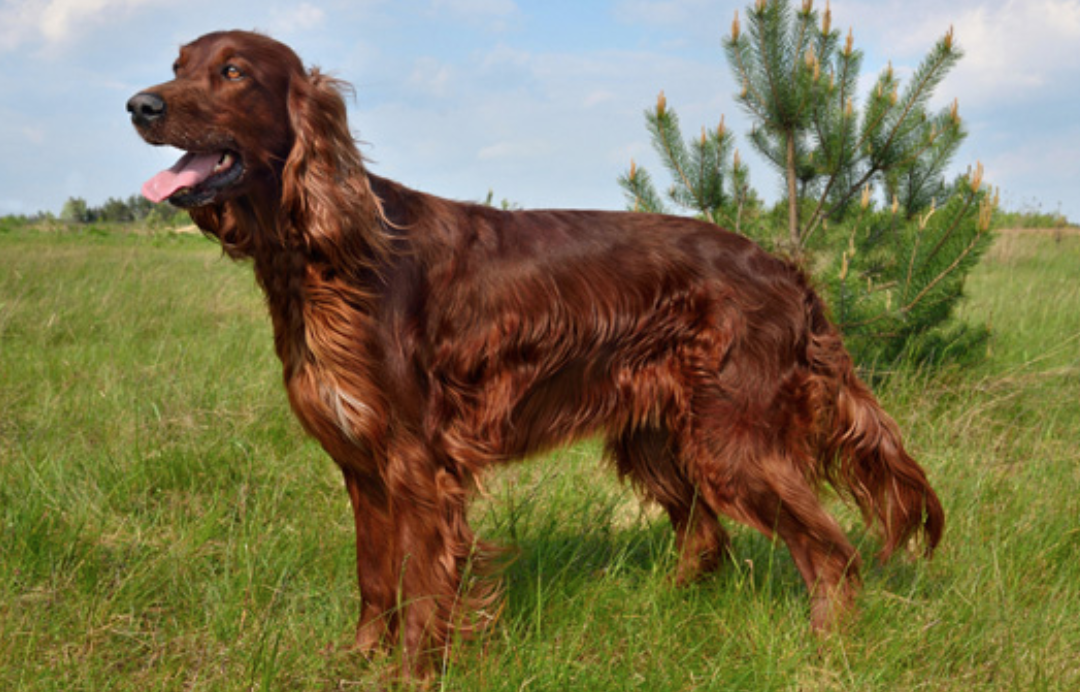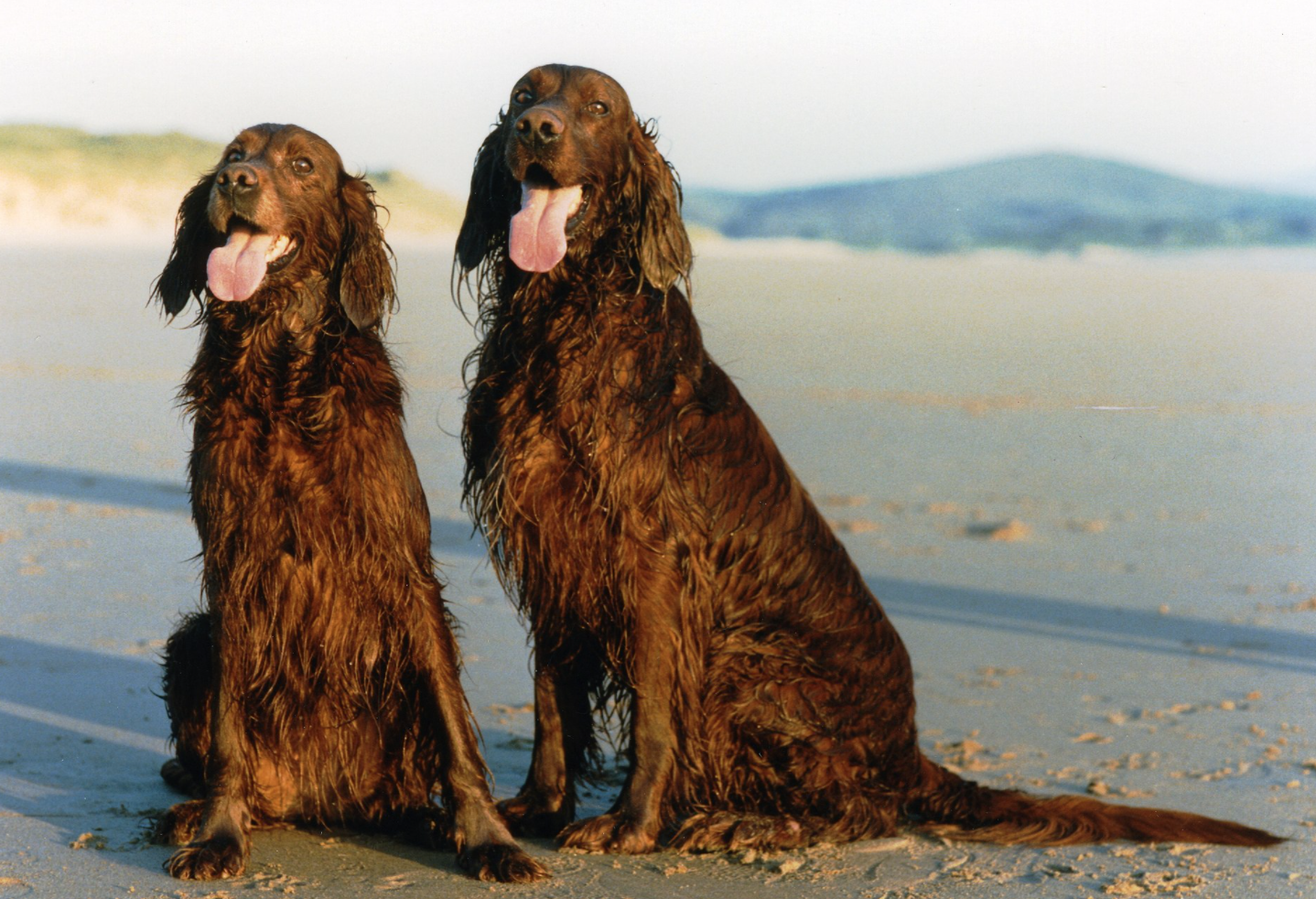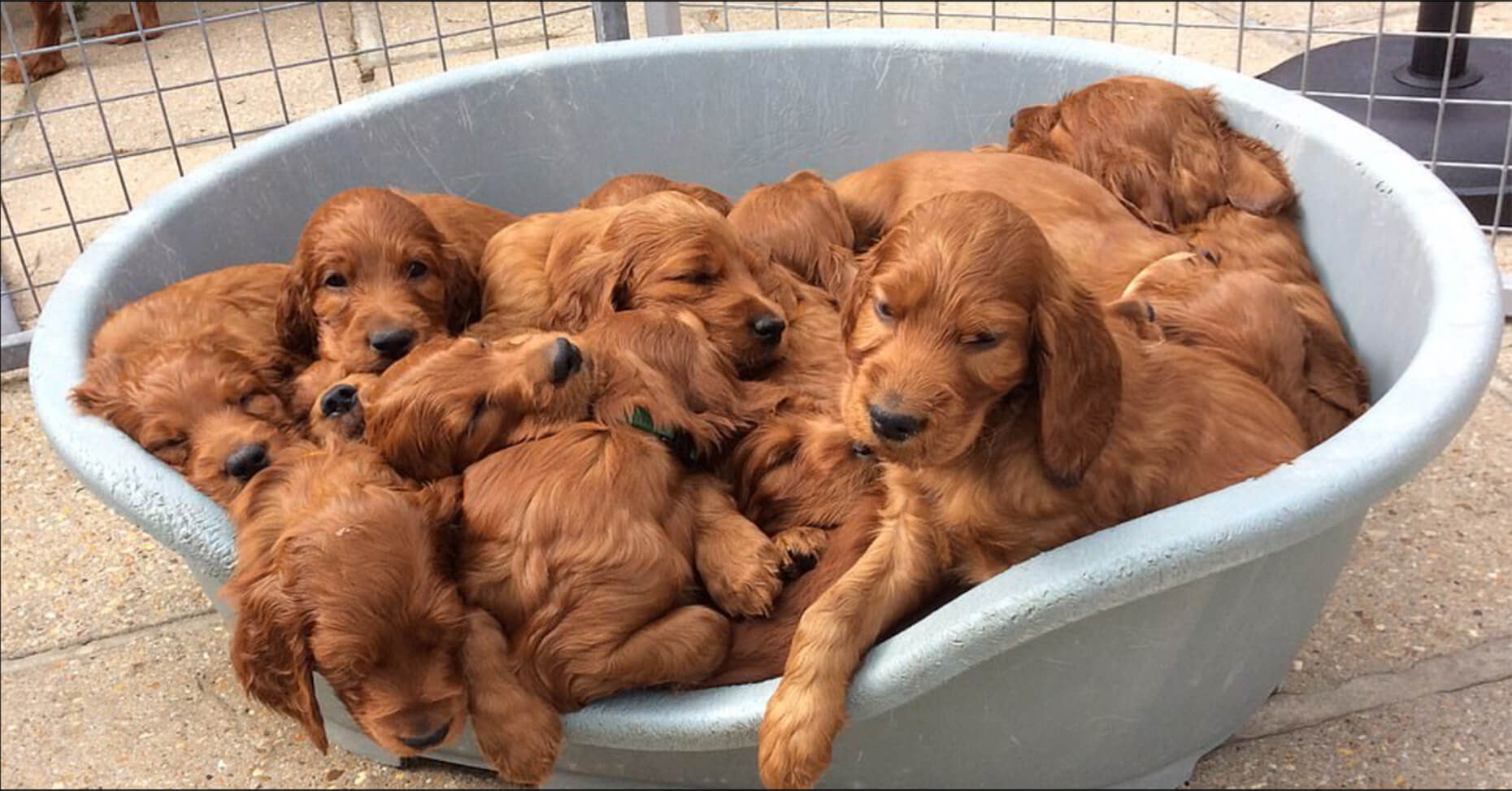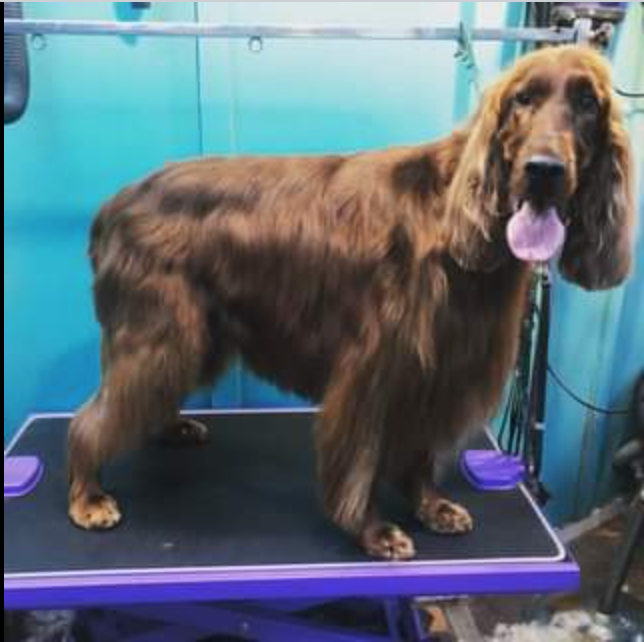The Irish Setter: Majestic yet Mischievous
The Irish setter is a majestic looking dog, known for its love of running and with a history that spans hundreds of years.
They are popular pets to this day, and it’s no real wonder with their friendly and outgoing nature, elegant good looks and high level of intelligence- even if they are prone to having a mischievous streak!

Recognising an Irish Setter
The most distinctive feature of the Irish setter is their magnificent coat, which ranges in colour from a deep mahogany to lighter red. This medium length coat is flat and straight-ish with a slight wave to it, whilst longer hair is found on the backs of the legs, chest and tail, and a silky fringe on their distinctively floppy ears.
How tall is an Irish Setter?
Male Irish setters are typically slightly taller than their female counterparts, but both will usually stand between 25 and 27 inches at their withers.
How heavy is an Irish Setter?
Both the male and female dogs will typically weigh between 60 and 70 pounds when fully grown.

Irish setters are the clownish rogues of the dog world: lively, intelligent and with a great sense of mischief.
These beautiful dogs can make very good family pets due to their naturally friendly nature, but due to their large size and fondness for rollicking, caution should always be taken when introducing them to small children. likewise, as they are hunters at heart, introduction to smaller pets needs to be handled carefully, although there is no reason why they cannot live alongside other pets if properly socialised.
Irish setters are a large and active breed of dog, so they will require daily long walks with plenty of opportunities to run around off-lead. Due to their reported tendency to ‘play deaf,’ it is important to undertake careful training and plenty of recall practise before letting them off.
Not giving an Irish setter enough activity could lead to a bored or destructive dog, in fact they particularly enjoy being given a job to do. These dogs thrive on constant human companionship, so should never be left alone for long periods, but you will be awarded for putting the time in as you will end up with a very affectionate and loyal companion.
Irish Setters, despite being alert to their surroundings, are not a naturally assertive breed, so they are not well suited to being guard dogs. They have been known to be used as therapy dogs, in schools and in hospitals.
History of the Irish Setter
The Irish setter is the youngest of three recognised setter breeds, believed to have been descended from the English setter in particular. In the 18th century, Irish hunters needed a fast working dog with a keen nose, and these dogs were particularly appealing because their bright red colour was easy to spot in cover.

From detailed stud records from as early as 1793, we know that a number of prominent landed Irish gentry were breeding these setter lines at this time. The de Freyne family of French Park were one such family of breeders, as well as Lord Clancarty, Lord Dillon, and the Marquis of Waterford.
From as early as 1845 it was recorded that setters in Ireland were mainly either red and white or white patched with deep chestnut. But then a few landmarked pure red dogs came along and influenced the breed. Champion Palmerston was one such dog, a stunning, lighter boned, red-mahogany dog born in 1862. From him, most of our modern day Irish setters have descended.
The breed standard for the modern Irish Setter was first drawn up by the Irish Red Setter Club in Dublin and was approved on 29 March 1886.
Irish Setter Puppies
Irish setters typically have litters of between eight and twelve puppies.
You can find some excellent advice if you are thinking about buying an Irish setter puppy from the Irish Setter Breeding Club.
You can find a list of litters due on the reputable Irish Setter UK & Ireland website HERE.

Caring for your Irish Setter
Taking on any breed of dog as a pet is a huge commitment, but there are some specific considerations to make before you welcome an Irish setter into your home.
Grooming
These dogs are known for their beautiful, long, glossy coats, which means that there is a fair amount of grooming involved in their care.
The dog should be brushed several times a week, following the direction of the hair growth from the head to the back, along the truck and down the legs to the feet.
Following the brushing, it is advised to use a wide toothed comb to break up any tangles and remove any mats that the brush may have missed. The wispy and feathery hair under the setter’s elbows, and abdomen. Tail and ears are particularly prone to tangles, so may need a finer comb.
Regular coat stripping is recommended as opposed to other methods of chipping or hair removal. Ideally, this should be done at least every 3 months. If you are unfamiliar with the coat stripping method, it can be done for you at a reputable dog groomer.
It is also important to keep your dogs nails trimmed, although this can be tricky to do if you are not experienced with it, so you may prefer to use a groomer or your vet for this.

Health
Irish Setters tend to be a relatively healthy breed. Gluten intolerance is a prominent genetic disorder that becomes apparent at around 6 months of age. Other problems that have been noted with this breed include progressive retinal atrophy, hip dysplasia and autoimmune thyroiditis.
A good breeder will be able to provide you with the pup’s family history and there are some genetic tests available.
Life expectancy
The life expectancy of an Irish setter is between 12 and 15 years.
Quick Facts
- Ireland’s national bus and coach operator Bus Éireann uses the Irish Setter as its corporate logo.
- The breed has one time been the inspiration for the Walt Disney movie and the books about “Big Red” in 1962.
- This breed was one of the first 9 breeds to gain early AKC-recognition in 1878.
- Their name in Gaelic is “Madra Rua” which is translated as “red dog.”
- The popularity of these dogs has led to them being used in a number of recognised F1 cross breeds, the most popular of these being the Irish Doodle.
What you should do next...
- Browse our plots to claim your title of Lord or Lady of the Ardmore
- Add any extra gifts and accessories, inspired by Irish traditions
- Receive your gift pack in the post and enjoy!
